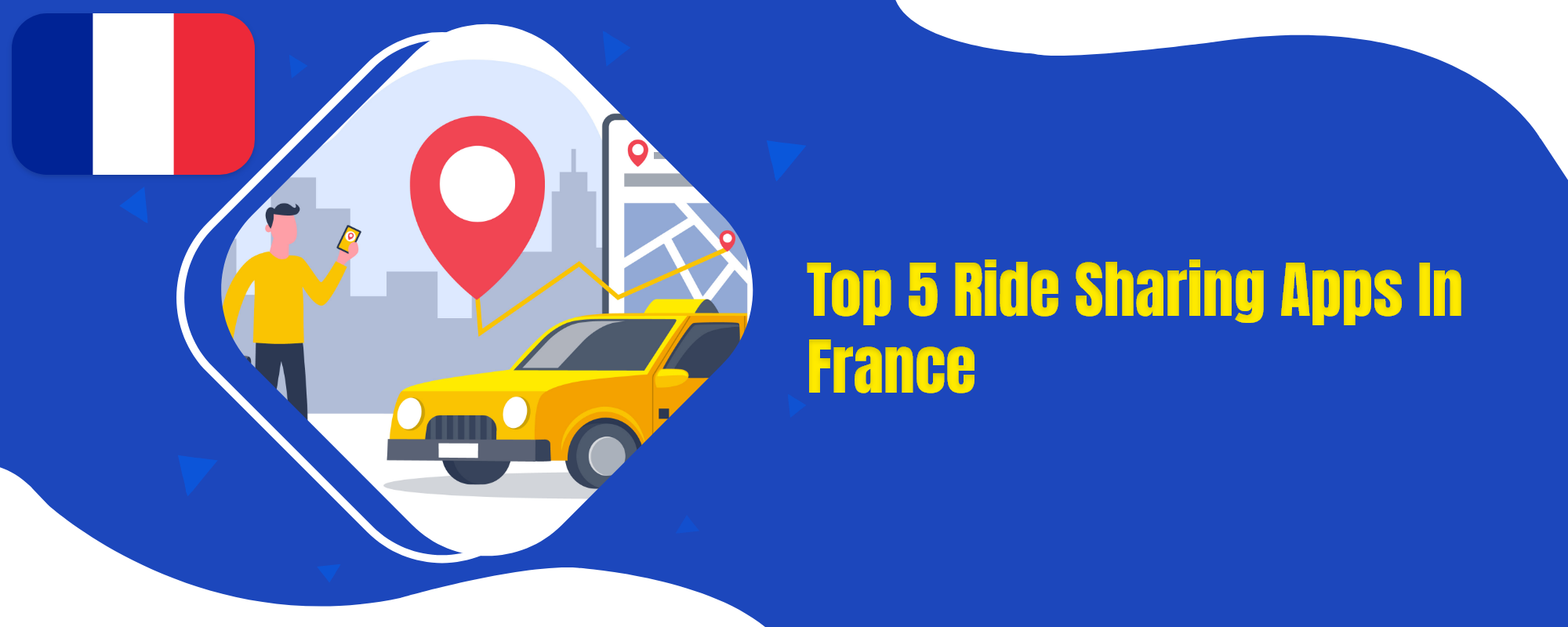Ride-sharing is a booming industry in France, with millions of users and drivers using various apps to book and offer rides. Whether you are an entrepreneur looking to start your own ride-sharing app, or an investor looking for a profitable opportunity, this article will help you understand the key features, benefits, challenges, and best practices of launching a ride-sharing app in France. We will also review some of the top ride-sharing apps in France and what makes them successful.
Benefits of Ride-Sharing Apps
Ride-sharing apps provide a convenient and affordable way to get around, especially in urban areas where public transportation and parking are limited or expensive.
- Ride-sharing apps also offer a variety of options to suit different needs and preferences, such as taxis, private cars, shared rides, or eco-friendly vehicles.
- Ride-sharing apps can also help reduce traffic congestion and greenhouse gas emissions by encouraging carpooling and using electric or hybrid vehicles.
Challenges of Ride-Sharing Apps
Ride-sharing apps face several challenges in the French market, such as regulatory hurdles, competition, and customer satisfaction.
- Ride-sharing apps need to comply with local laws and regulations regarding licensing, taxation, insurance, safety, and data protection.
- Ride-sharing apps also need to compete with other players in the market, such as traditional taxi services or public transportation.
- Ride-sharing apps also need to ensure customer satisfaction by providing quality service, security, transparency, and feedback mechanisms.
Best Practices of Ride-Sharing Apps
Ride-sharing apps can follow some best practices to overcome the challenges and achieve success in the French market, such as:
- Offering a user-friendly and efficient app that allows customers to book a ride easily and quickly, track their driver’s location and arrival time, pay online or in cash, rate their driver and ride, and contact customer support if needed.
- Providing a range of services and features that cater to different customer segments and needs, such as different types of vehicles and services, customization options, loyalty rewards, discounts, referrals, etc.
- Recruiting and retaining qualified and professional drivers who have the necessary licenses, insurance, vehicles, and skills to provide safe and comfortable rides. Providing incentives, training, feedback, and support to drivers to ensure their satisfaction and performance.
- Leveraging data analytics and artificial intelligence to optimize the app’s performance, pricing, demand forecasting, driver allocation, route planning, etc. Using data to understand customer behaviour, preferences, feedback, and satisfaction levels.
- Marketing and promoting the app through various channels and strategies, such as social media, online ads, word-of-mouth referrals, partnerships with local businesses or organizations, etc. Creating a strong brand identity and reputation that attracts and retains customers.
Top 5 Ride-Sharing Apps in France
Here are some of the top ride-sharing apps in France that you can learn from or compete with:
- LeCab
- G7 Taxi
- Chauffeur Prive
- Uber
- CityMapper
LeCab
LeCab is an excellent Parisian cab service, and we nearly used them instead of another company. They offer a private driver service in Paris as an alternative to public transportation and individual vehicles (like Uber). The app is fantastic, and both the journey itself and the 5-minute courtesy wait in between are highlights of the magnificent experience. Airport transportation is another service that LeCab provides at affordable rates.
What makes Lecab unique in comparison to other ride-hailing providers, is the availability of a devoted phone line for booking trips if case you have an issue while booking a ride online. This feature has helped the general populace as not all are internet savvy and in case of low connectivity, you have an option.
G7 Taxi
G7 Taxi was the first ride-sharing app in France, and for a while, it was the only one. It boasts the largest taxi fleet, with 8,000 drivers available, and provides convenient booking and customization features (like English-speaking drivers).
The app itself isn’t terrible, but the rides are average at best. If you compare G7 to applications like Uber, which include features like star ratings for drivers and rigorous quality controls, you’ll find that the average quality of a ride is lower on G7.
G7 gives priority to keeping the environment safe for future generations. Their fleet now includes 55% of the vehicles which are either hybrid or electric. Customers can find out how much of carbon footprint they have saved over a month with a Carbon Footprint Report emailed every month.
Chauffeur Prive
Chauffeur Prive is an alternative to Uber in the private car service market in the area (recently acquired by Daimler). They have over 18,000 drivers and 2 million users, making it just as popular as Uber. The app’s ease of use and the quality of the rides it provides are superior to those offered by Uber.
You can pick from a variety of luxurious vehicles driven by courteous, experienced drivers. If you want to explore Paris’s historic districts in style, Chauffeur Prive is the way to go.

Uber
The taxi industry has been profoundly disrupted by Uber. Nonetheless, from the customer’s point of view, nothing compares to the ease of having an Uber driver take them home instead of relying on a traditional taxi service.
To begin, you can use Uber not only in France but in probably close to 95% of the nations you visit. Uber drivers are always friendly and helpful since they care about their ratings. This guarantees a stress-free journey without any unnecessary stops. Also, compared to normal taxis, Uber is quite inexpensive.
CityMapper
You can travel wherever you need to go using Citymapper, and the options it provides for getting there include taking the subway, a bus, walking, hailing a taxi, renting a bike, or even using Uber. The usefulness of this app in Paris stems from the fact that it provides accurate and up-to-date information on service delays and directs users to the nearest exit upon reaching their specified location.
CityMapper app allows users to compare travel options in real-time across various transport modes. After a decade of operation, CityMapper has gained considerable popularity while raising close to $60 million in funding.
Monetization and Business Model of Ride-sharing Apps in France
Aggregator ride-sharing business models have seen increased uptake because of the proliferation of ride-sharing apps in France. Instead of creating its own ride-sharing product, the company relies on strategic alliances with existing businesses to suit consumer demand. Companies that operate based on peer-to-peer technology for providing rides adhere to the same corporate governance practices as other businesses.
App development frameworks such as Karry – a ride-sharing app solution, are useful in these kinds of situations.
Algorithms are used by services like Uber and Lyft to match riders with drivers. Since prices fluctuate at the discretion of the market, we can only speculate as to how often they might be readjusted. Some ridesharing companies are trying to be more open with their clients, car owners, and the public at large by offering features like ride tracking and driver ratings.
Moreover, the ride-sharing business model can pave the way for car owners to enter the service sector. Perhaps trust could be improved with the addition of features like rider and driver ratings. Service providers are not required to get licenses or pay registration or tariff fees.
With the support of frameworks like Karry, a platform for ride-sharing apps, entrepreneurs may launch their own ride-hailing enterprises. It’s a one-stop shop that will set your taxi booking service apart from the competition and make it more appealing to customers than services like Uber.










